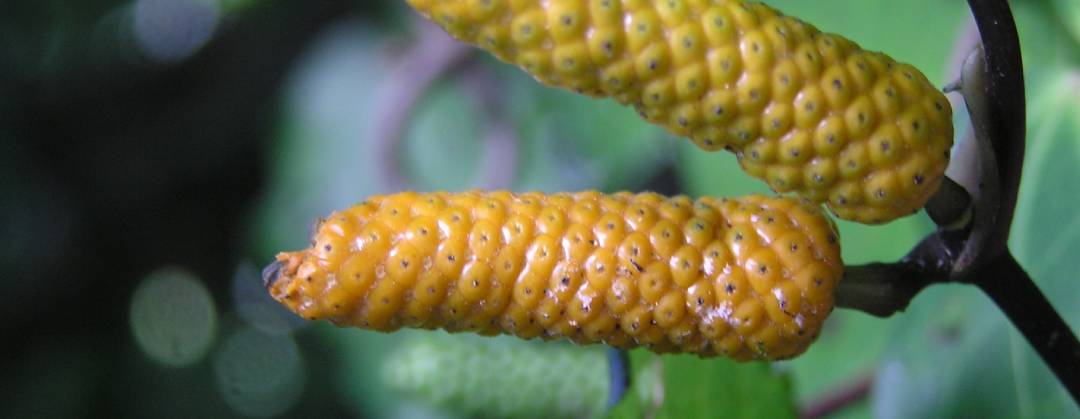Macropiper excelsum.
Piper excelsum Pepper tree | Kawakawa

This guide is based on a literature review. It compiles information from various sources. Different sources may offer varying advice and findings.
Good germination rates. Uncertainty around long-term storage. Can be grown from cuttings.
Easy.
Seeds store well.(2)
Seeds need de-pulping (removal of seed from fruit) as in-fruit seeds have low germination (15%).(3)
64–76% of seeds are viable.(3)
Germination, seed storage, and vegetative propagation need further investigation.
Information about the native seed profiles
All species names are in the following order: scientific name, common name, and Māori name. Names may vary by region. We have tried to use the most common names across New Zealand.
We have sourced photos from different websites and creators. We have used the images under different licences. These include Public Domain and Creative Commons licenses. For Piper excelsum, the image details are:
- Photo by (c) Tony Wills – some rights reserved (CC BY-SA)
- Original image
The basis for each seed profile is a literature review carried out by Scion. Te Uru Rākau – New Zealand Forest Service commissioned and worked on the review to produce a native seed catalogue. The full seed catalogue is on the Ministry for Primary Industries (MPI) website.
References
Burrows, C J (1997) Reproductive ecology of New Zealand forests: 2. Germination behaviour of seeds in varied conditions. New Zealand Natural Sciences 23, 53–69.
Metcalf, L J (1995) The propagation of New Zealand native plants. Godwit; Auckland, New Zealand.
Burrows, C J (1995) Germination behaviours of seeds of the New Zealand species Fuchsia excorticata, Griselinia littoralis, Macropiper excelsum, and Melicytus ramiflorus. New Zealand Journal of Botany 33(1), 131–140.
New Zealand Plant Conservation Network. Piper excelsum. Accessed 17 October 2024.